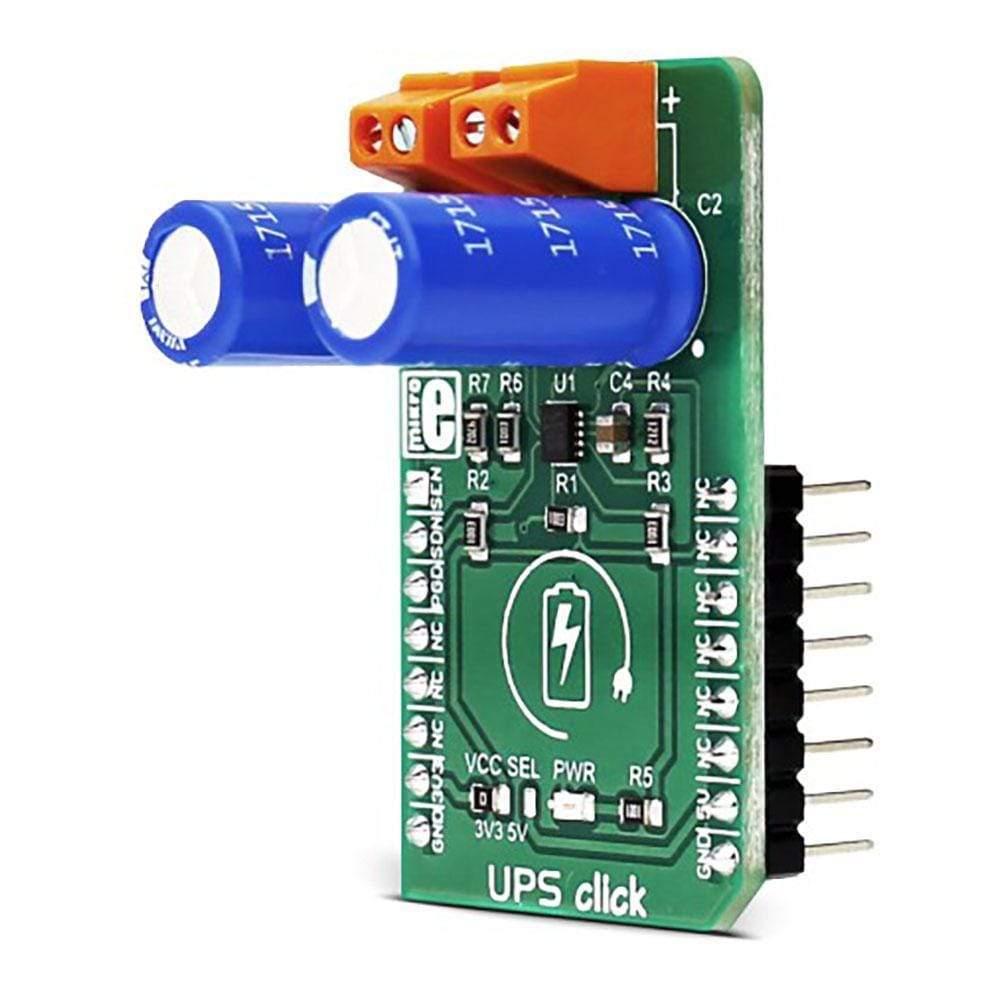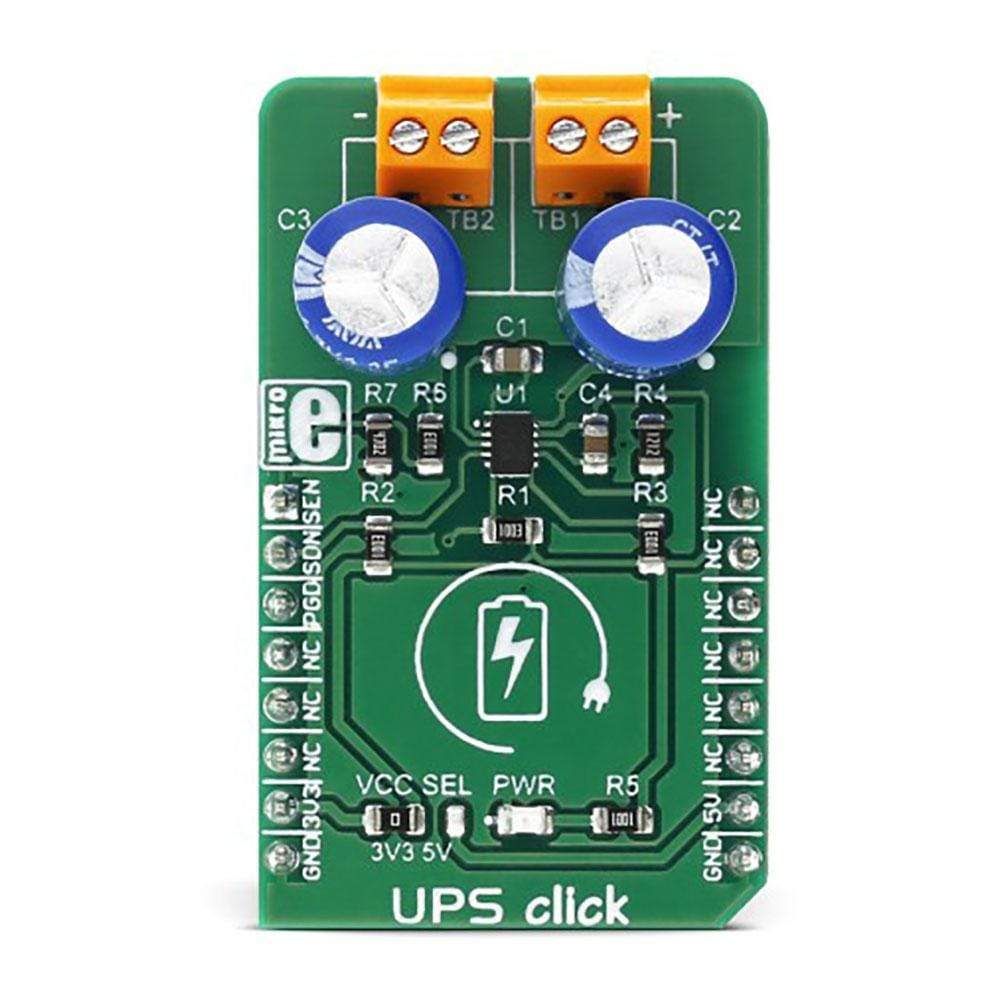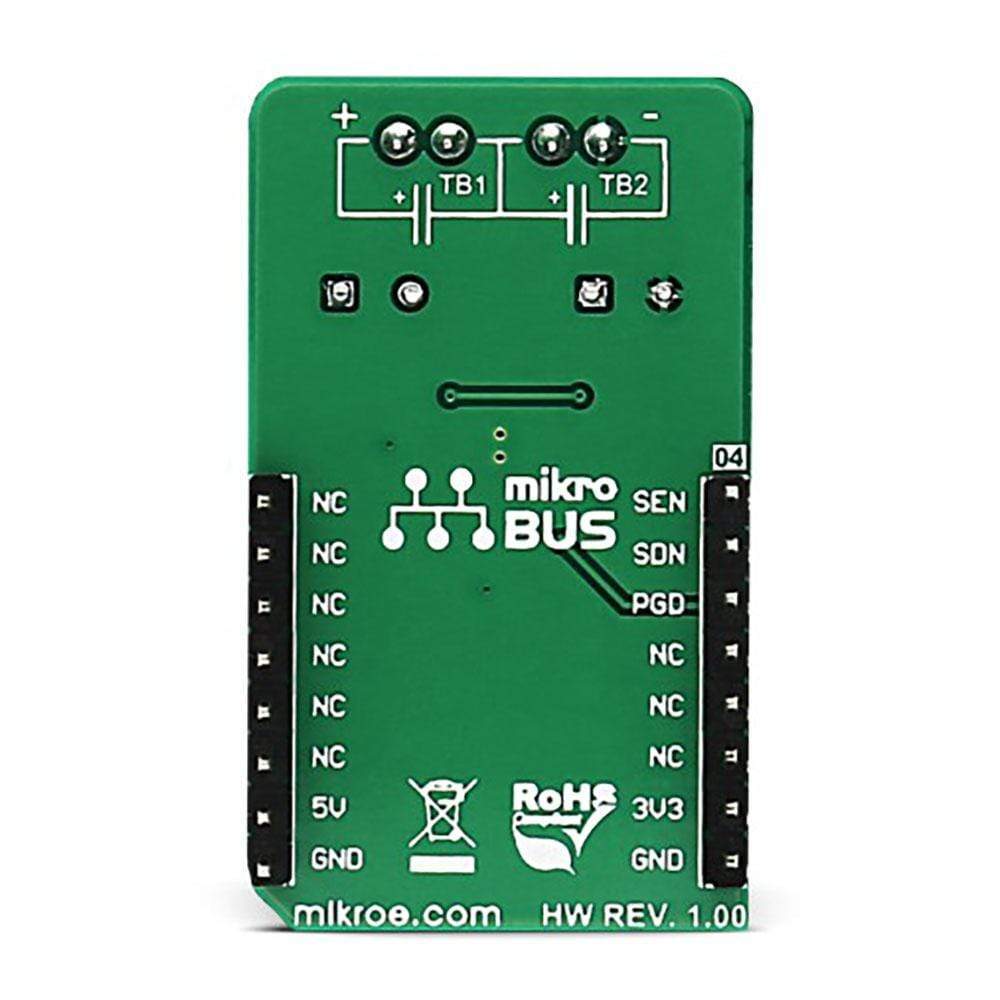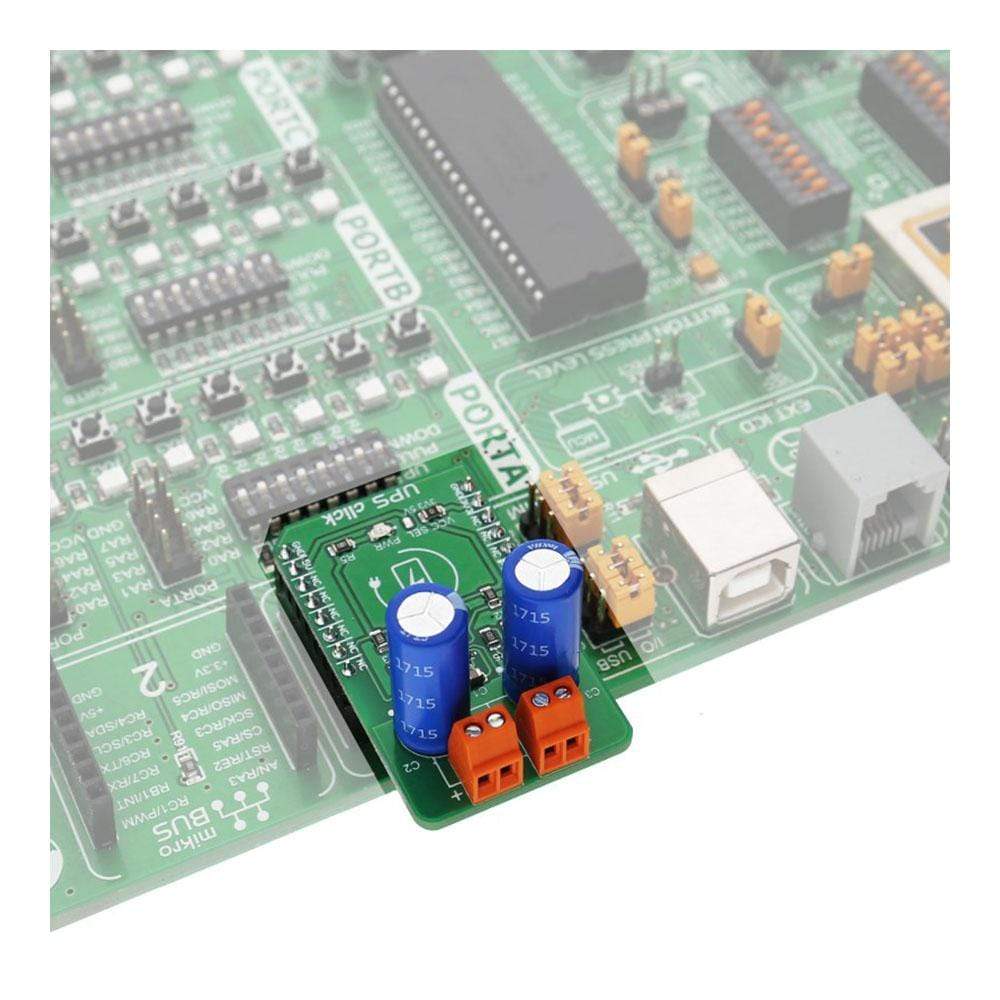



Overview
The UPS Click Board™ is a supercapacitor charger Click Board™ that provides continuous power for a load connected to the output terminals. It also provides a temporary backup power supply in cases when the main power supply is abruptly disconnected - hence its name - UPS Click Board™.
Besides backup function, it also provides power for the applications with high peak power requirements, such as LED flashes, PCMCIA TX bursts, HDD bursts, GPRS/GSM transmitters and similar. The UPS Click Board™ uses two 3.3F supercapacitors connected in series, which are used as temporary power storage banks.
Downloads
L' UPS Click Board™ est un chargeur de supercondensateur Click Board™ qui fournit une alimentation continue à une charge connectée aux bornes de sortie. Il fournit également une alimentation de secours temporaire dans les cas où l'alimentation principale est brusquement déconnectée - d'où son nom - UPS Click Board™.
Outre la fonction de secours, il fournit également de l'énergie pour les applications nécessitant une puissance de pointe élevée, telles que les flashs LED, les rafales de transmission PCMCIA, les rafales de disques durs, les émetteurs GPRS/GSM et autres. L' onduleur Click Board™ utilise deux supercondensateurs 3,3F connectés en série, qui sont utilisés comme banques de stockage d'énergie temporaires.
| General Information | |
|---|---|
Part Number (SKU) |
MIKROE-3001
|
Manufacturer |
|
| Physical and Mechanical | |
Weight |
0.023 kg
|
| Other | |
Country of Origin |
|
HS Code Customs Tariff code
|
|
EAN |
8606018712878
|
Warranty |
|
Frequently Asked Questions
Have a Question?
-
Can I download the schematic for the UPS Click Board?
Yes, MikroE supplies schematics for all its Click Boards ...
UPS Click Board™ Schematic




